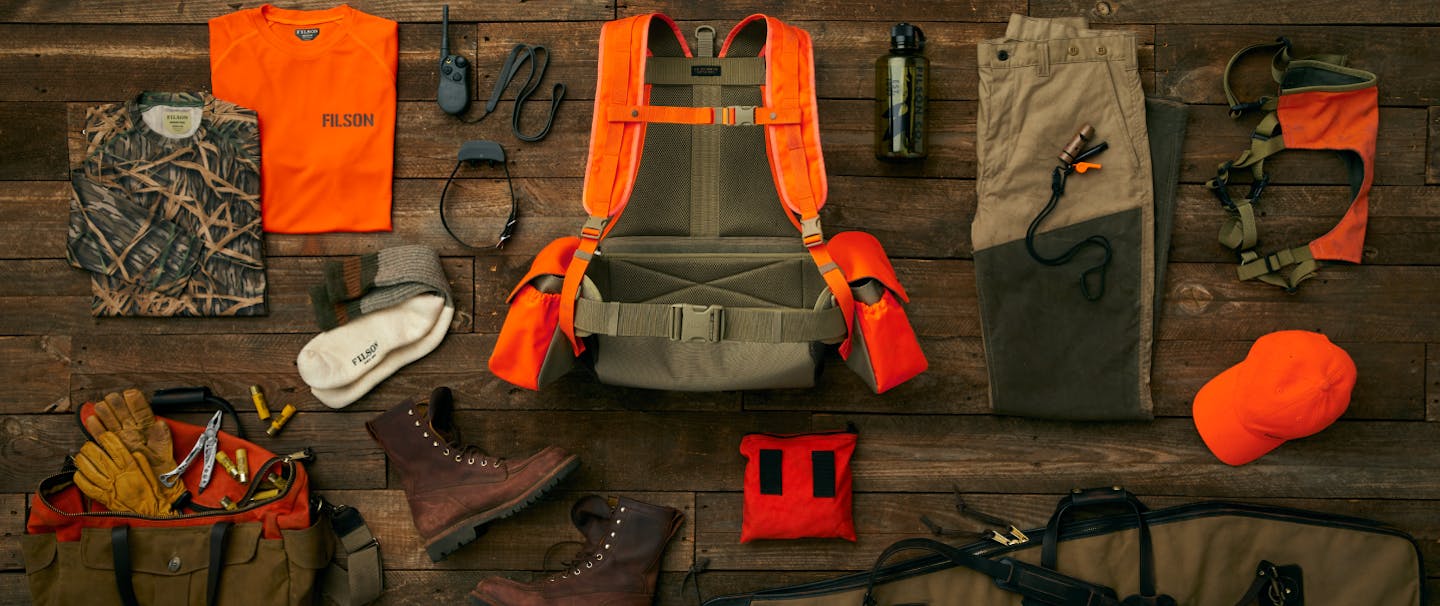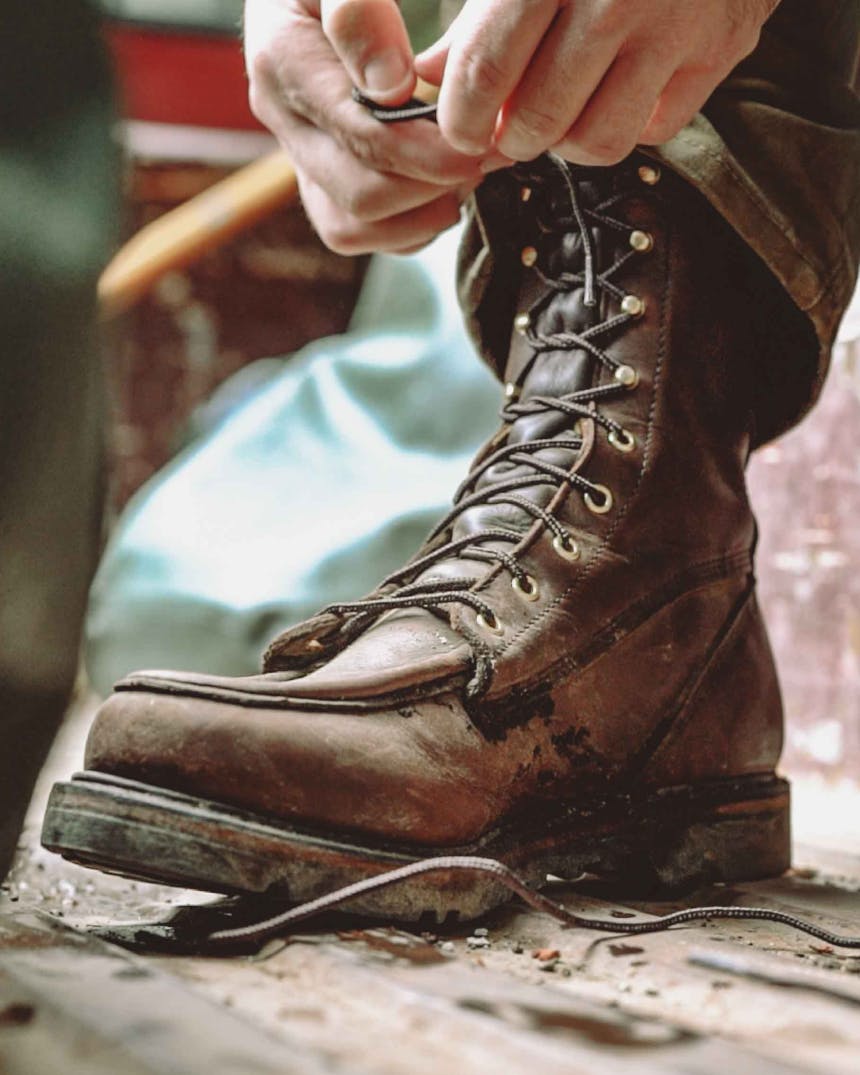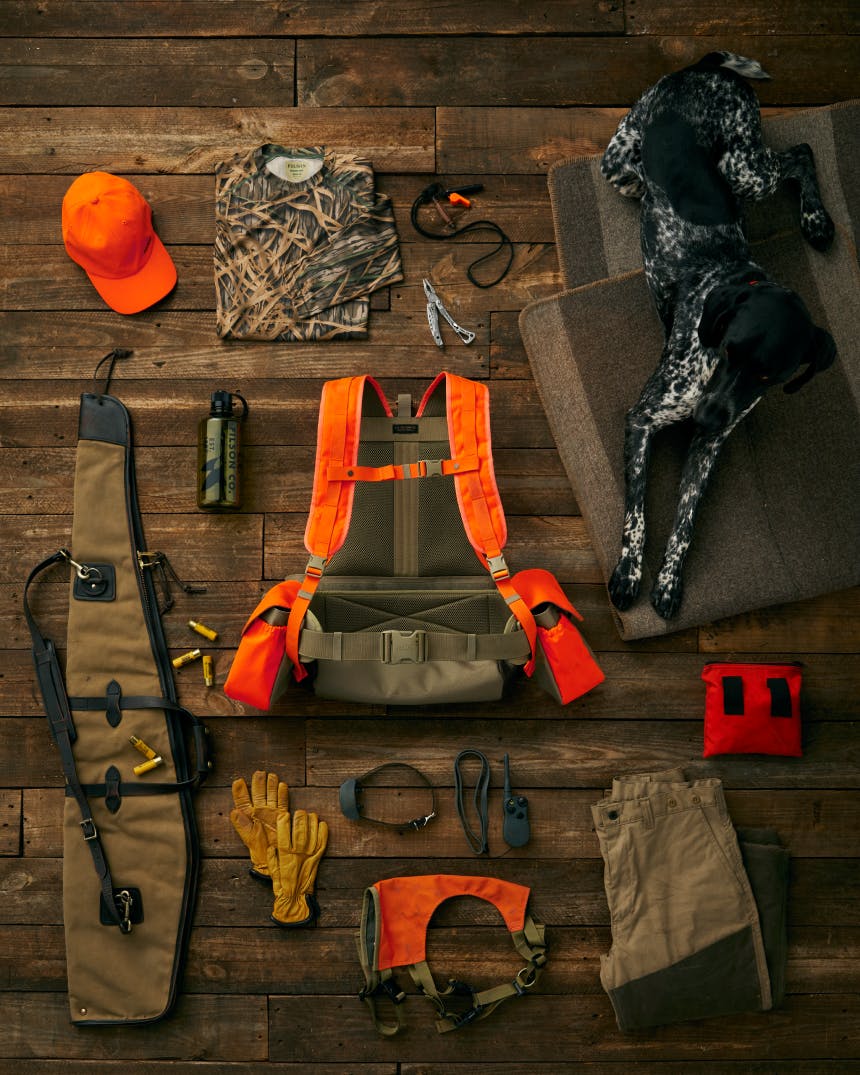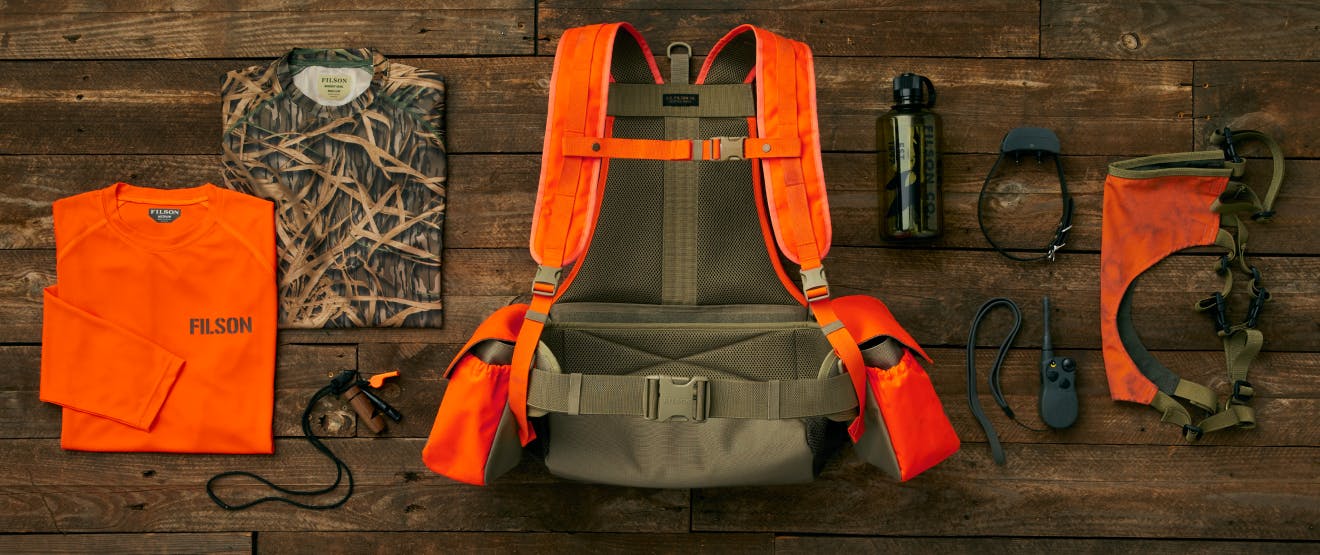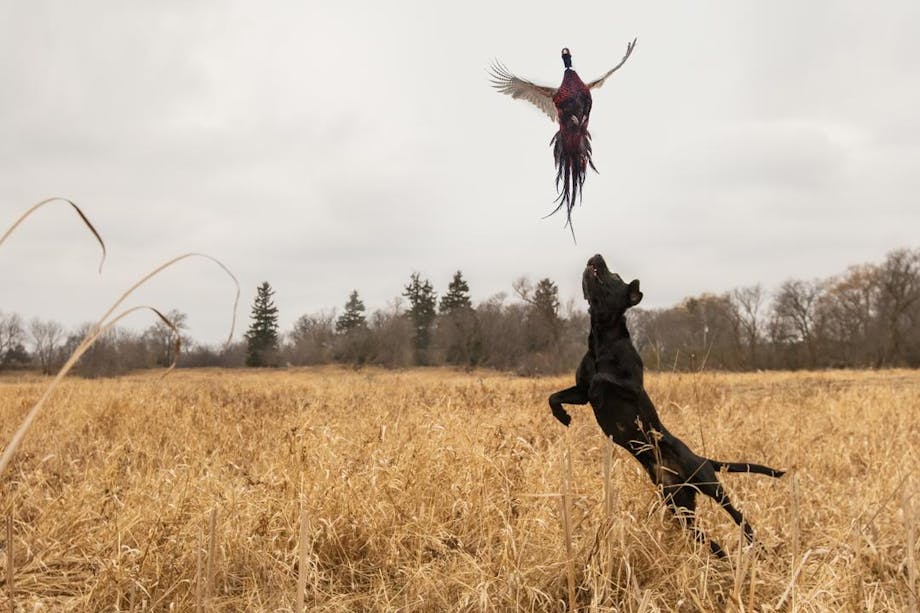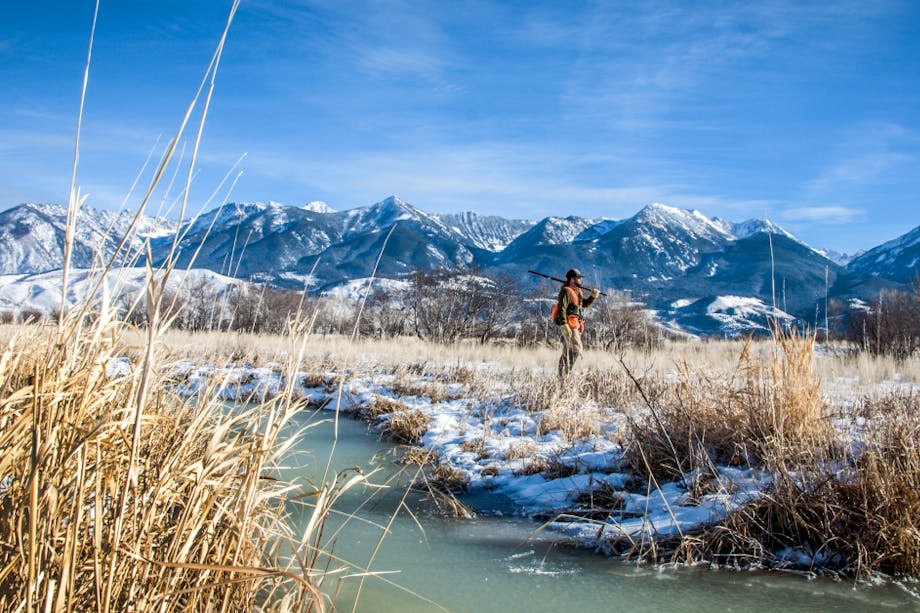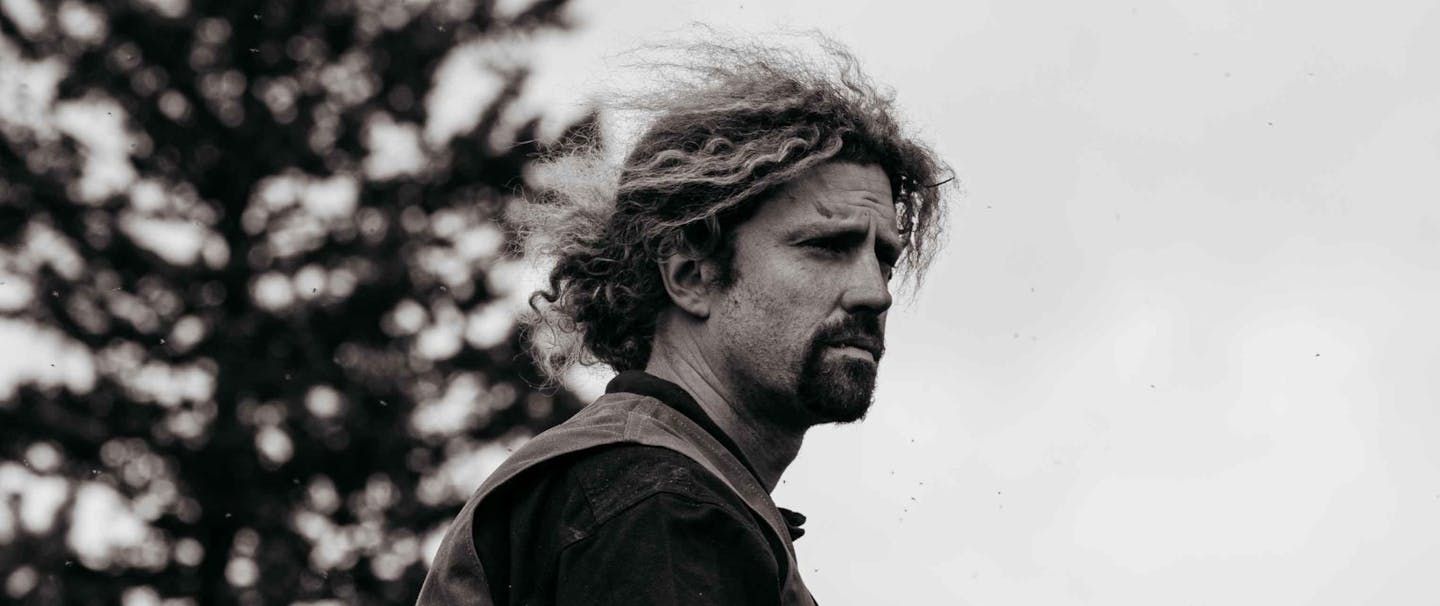On a hunt for Gambel’s Quail in the Arizona desert, having the right gear makes all the difference. From traversing dusty arroyos, keeping hydrated, to avoiding cactus needles, Edgar Castillo shares six pieces of crucial gear from personal experience.

“Dogs are on point!” yelled Spencer.
We quickly maneuvered up the rocky and cacti-infested wash. Boots desperately dug their rubber teeth into the uneven terrain, and gloved hands pushed away limbs with razor-sharp needles. Suddenly, a covey of Gambel’s took flight. I fired off a volley of shots as a polite farewell. As I reloaded, a late-rising single bird burst from a nearby prickly bush. I quickly shouldered the over-under shotgun and squeezed the trigger. With a poof, a cloud of feathers slowly danced in the air. I cautiously maneuvered through the brush—feathers blowing across the sandy path signaled I was close. A still figure lay at the base of a catclaw bush. I gently lifted the desert knight, a beautiful male.

The Gambel’s quail is an enigma—delicate in stature and austere in plumage—yet they inhabit a vast, harsh land. They’re adaptable and can occupy a widely diverse habitat and topography across Arizona. Luckily for the traveling wing shooter, over 50 percent of Arizona is accessible for public use by hunters.
Gambel’s habitat includes environments where brush and arroyos provide cover. During three days of hunting, we maneuvered through scrubby, thorny bushes and waded across a land teeming with every cactus known to humankind—and some that are not. Draws and washes were productive. Sources of water are a suitable place to “circle the wagon” and hunt in ever-reducing circular patterns. Don’t exclude the mountains, as we found ourselves amidst the pinyon-juniper, scrub oak, and chaparral, scrambling up and down nearby mountainsides to gain a firm foothold from where to get a good shot. I quickly learned that chasing Gambel’s requires a few critical pieces of gear to make the hunting more enjoyable and comfortable.
The desert provided rolling hills, dry creek beds, and other terrain features to give the visiting bird hunter opportunities for both adventure and skill assessment.

Shotgun—Shotguns carried by quail hunters should be lightweight. Smaller gauges tend to be lighter, meaning the shotguns can be raised to shoulder-level quicker on those fast-flying Gambel’s. Any shotgun action works. If shooting non-traditional gauges, such as the 16, 28, and .410, make sure to bring enough ammunition or know locations that carry it. The quail hunter who hunts these desert birds should carry something they’re not afraid to damage. Forego those heirloom doubles and fancy engraved semis. Instead, go with a shotgun that you’re not fearful of dropping or denting up a little. At some point, it is going to happen. Wooden stocks will get nicks and scratches from cacti. These blemishes only add character to the shotguns—imperfections worn proudly like a badge of honor in the field for the hardships endured on tough hunts for tough birds.
Boots—I quickly realized that success in finding Gambel’s is proportional to the number of miles walked. Upland hunting is arguably the most active and engaging of field sports. That kind of walking—and, in some cases, climbing—takes a toll on the feet. This translates into the need for a good pair of lightweight boots. Poorly fitting and heavy boots quickly become uncomfortable and can lead to blisters and fatigue. Foot-cushioning comfort and long-wearing durability should be key points. Boots should be tough to withstand the rigors of the unforgiving terrain yet comfortable enough to wear. Traversing uneven terrain, I was thankful my boots have moderately aggressive Vibram outsoles which kept me upright during steep climbs. Good ankle support was instrumental when sidestepping rocks and cactuses. Ascending and descending was a challenge when getting into position to shoot. Maintaining balance was not an option but a necessity. Whether the boot is a traditional, leather-style upland boot or a nylon hiking boot is up to the wearer. And if you’re thinking that leather boots fend off cactus spines…think again! There were instances when I didn’t even notice my boot resembled a porcupine with all the needles sticking out or the occasional prickly pear that stuck to the side of my boot.
Leather Gloves—Hunters should choose a pair of unlined pigskins that stretch and form to the hands as well as provide good dexterity. Leather offers better protection from softer material gloves and helps with keeping at bay all the things that cut, poke, stick, and scrape. Remember that although leather gloves help, cactus spines do go through them. Nevertheless, leather gloves provide a helpful barrier when pushing aside catclaw as it brushes up against you or as you move limbs away from your face or dig out Gambel’s burrowing underneath cactuses or bushes.
Vest—A hunter’s choice of bird vest is always personal. There are a multitude of vests on the market, each one made for short or longer treks. Some carry the basics and others can haul a limit of birds and additional gear with ease. There are strap and traditional-style vests as well as technical-style hunting vests packs that combine the strap design with a pack’s capabilities in the form of storage. Of course, lighter vests with less fabric are ideal on warmer days. Vests must be capable of carrying enough water to keep you hydrated. Some technical vests offer hydration system storage and pockets designed specifically to carry water bottles. Vests that offer several storage features are great for carrying first-aid kits, snacks, and other necessary items.

Water—Staying hydrated is key in a desert environment. Carrying enough water for yourself and your dog is essential. Most vests now offer the ability to carry water bottles in specific bottle holders and compartments. Some allow the use of integrated water hydration systems. But, for most of us, water bottles are what we carry. I’m not talking about the flimsy water bottles bought at a gas station. Any sharp needle could easily poke these cheap containers and leave you thirsty. I’m referring to something that holds a substantial amount of water for long, arduous, desert treks. Bird hunters should choose a water bottle—preferably two—that is well constructed, tough, and leak-proof. Water bottles need to hold at least 32 ounces of water. Wide-mouthed water bottles are easy to clean and accommodate most filtration devices.
Quail Call—Gambel’s quail are very vocal. A quail call can be used to locate and pinpoint coveys and singles. The three-note assembly call, “Chi-kaw-go,” is what the quail hunter will hear across the desert as birds attempt to rally. Mimicking the call is easy and an excellent hunting strategy. A quick search of the internet can produce a number of quail calls.
NOTE: A good Leatherman tool would be a wise choice to bring along to help pull out sharp cactus needles from anywhere they end up…through boots, gear, and skin! Another essential item is a comb. A comb makes for quick and easy work when dislodging needles and other prickly things from your dog’s paws, coats, and even from yourself.
